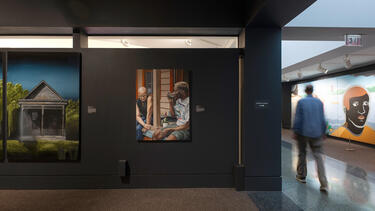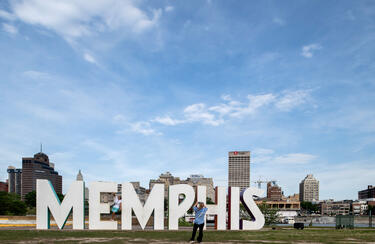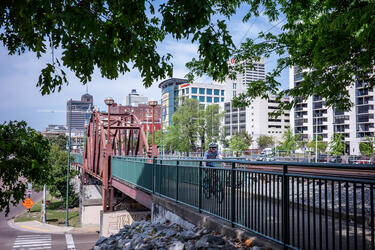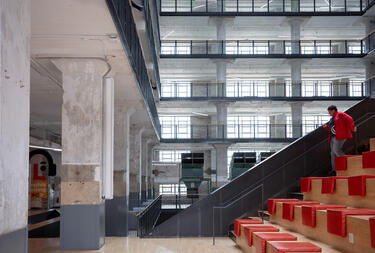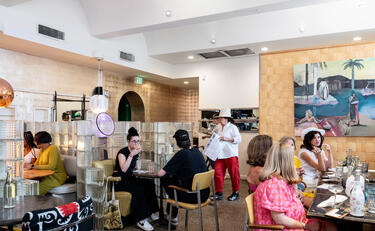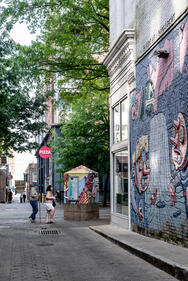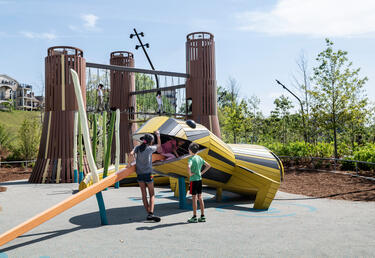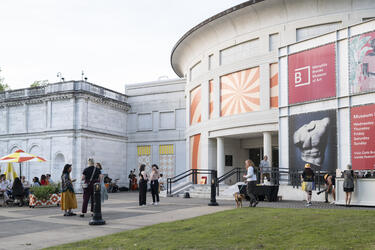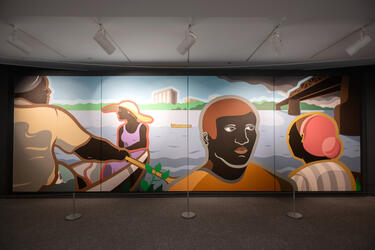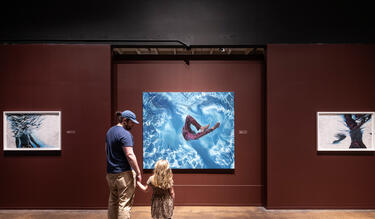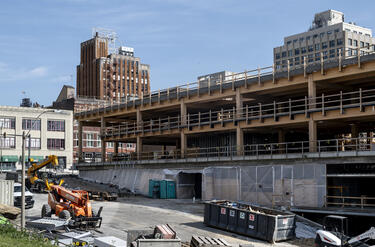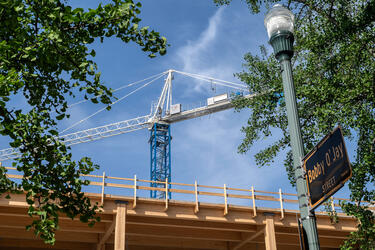Museum and Community: Constructing Change
Under the leadership of executive director Zoe Kahr ’06, the Memphis Art Museum is moving into a striking new building under a new name, aiming to use art to help catalyze economic growth and civic energy in the city’s downtown.
Zoe Kahr ’06, executive director of the Memphis Art Museum (MAM), leads an institution on the cusp of change. In 2026, it will leave the bucolic, cloistered site that has been its home for 110 years for a $180 million architectural statement downtown overlooking the Mississippi River. “This is a really ambitious project for a city of Memphis’s size,” Kahr says. “It demonstrates serious commitment to the arts.”
But the ambition of the new MAM doesn’t end with art. “The museum is ultimately about people. It’s a space with art, but more than that it’s a place that can bring a community together,” Kahr says. “Our goal is to draw Memphians downtown by creating spaces that feel central and dynamic.” Memphis, too, is on a cusp. Investment in downtown has revitalized old amenities and added new ones, but the city is also struggling with crime, poverty, and racial disparities. “This project has the potential to demonstrate the power of art for economic development, city building, and citizenship building,” Kahr says.
As a gigantic crane delicately maneuvers a beam over what will be a 50,000-square-foot roof garden atop the 122,000-square-foot museum, Kahr watches its progress beside Barbara Hyde, a MAM board member and CEO of the Hyde Family Foundation, which donated $40 million toward the new building.
Despite the racket from the construction, it’s easy to appreciate the panoramic view of the river. “For a city at such a spectacular location, Memphis has a surprisingly small number of public spaces where people can gather and see and feel the Mississippi,” Hyde says. “This project is absolutely about creating a great museum for art, but it’s also about creating a great place for the city; an inviting public commons that gives the river back to the city.”
Carrying the project to completion requires an immense effort from the organization. Simultaneously, the museum’s 56 employees are operating the existing museum, managing a huge construction project, preparing thousands of artworks for a move, and developing new programing and event models so the new museum opens with an approach that is welcoming and relevant to today’s Memphians.
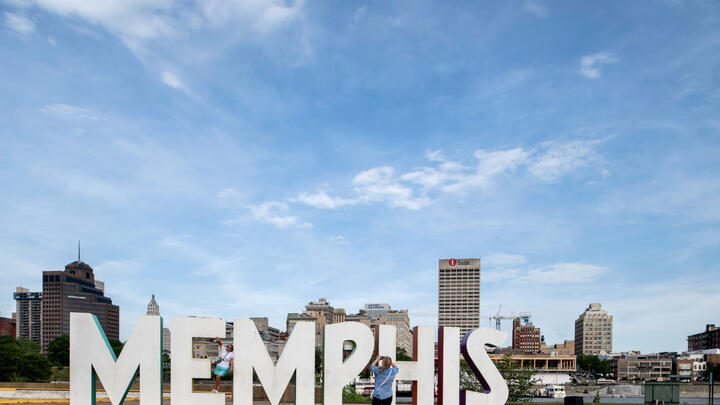
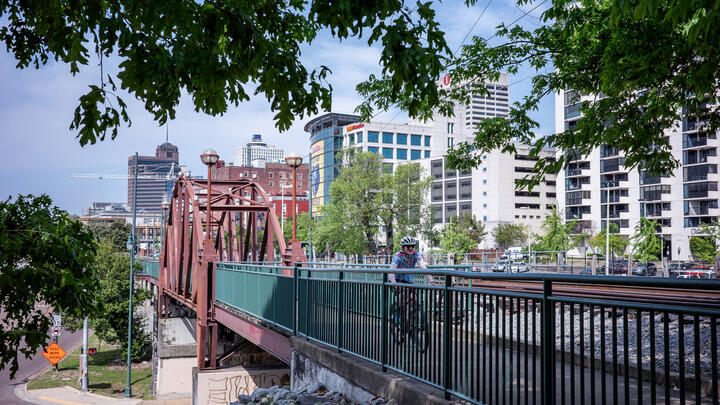
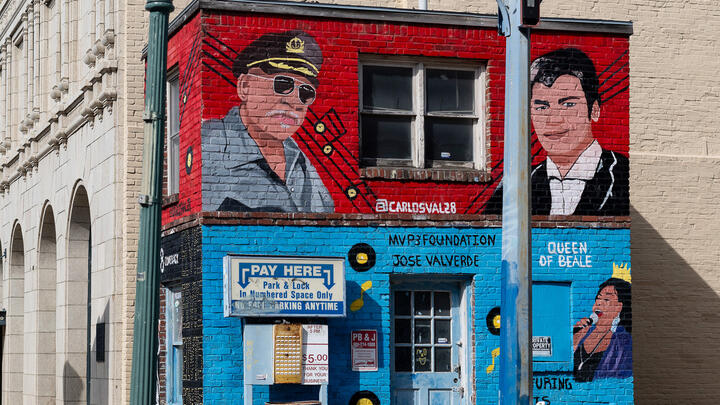
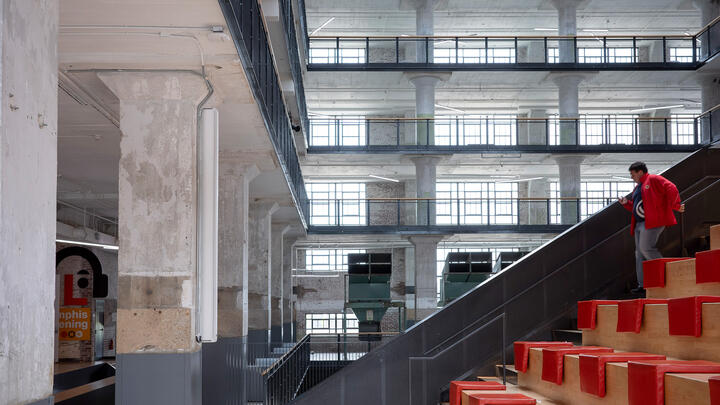

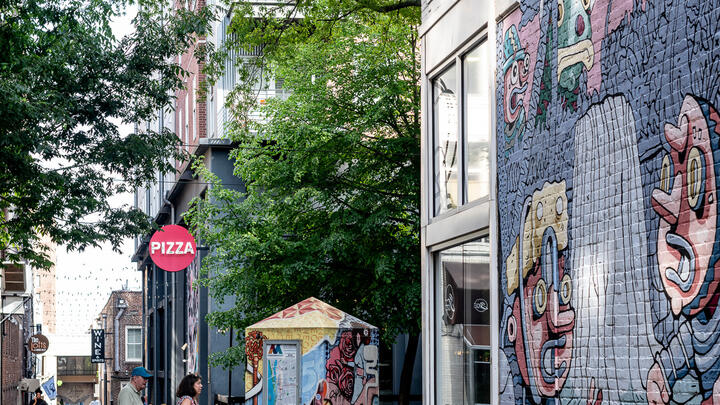
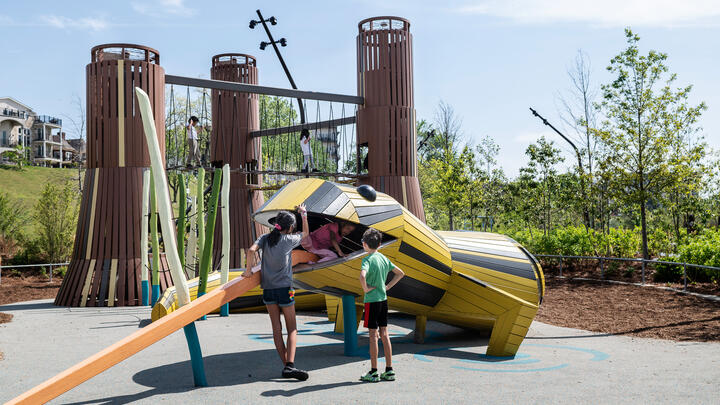
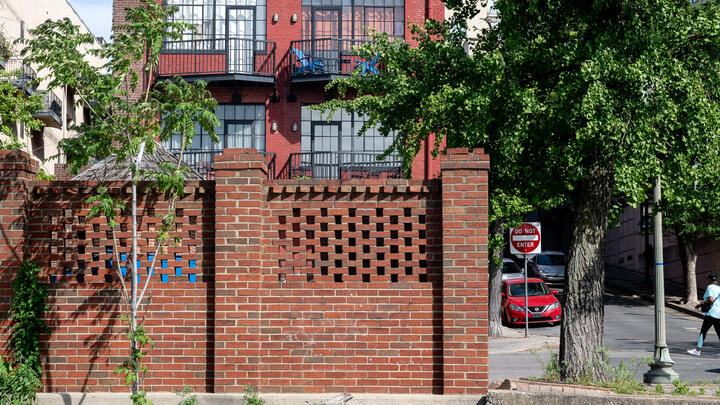
“Memphis is a place that is full of passion,” says Derek Fordjour, a Memphis-born artist who is also a member of MAM’s board. “It’s unpretentious and the values are centered around authenticity and earnestness. We’re known for being scrappy and making the most with less, whether that’s blues music or barbecue.”
The city was established in 1819 on a bluff above the Mississippi. It was then a hub for hardwood lumber and the cotton trade; it’s still a logistics center for rail, truck, and air cargo. It’s home to FedEx, AutoZone, and International Paper.
“I really don’t think it’s possible for a city to thrive without acknowledging its unique cultural position,” Fordjour says.
“The racial history of Memphis is not a secret,” he adds. The city was a major slave market. It was a focal point of the Civil Rights Movement; Martin Luther King Jr. was visiting in support of striking city sanitation workers when he was assassinated at the Lorraine Motel in 1968. Today, it’s the largest majority-Black city in the country.
As an art museum in a Black city, MAM must reckon with the past to move forward. “Historically museums in the South didn’t welcome Black residents,” Fordjour says. “When I came along as a child, that history was still present in the way that Black communities thought about museums.” As an artistic kid in the ’80s, he found museums fascinating—but also heard stories of Black artists winning awards from museums, only to be relegated to the parking lot when the time came to receive their prize.
“I’m motivated by that history. There’s a healing element for me personally to be part of this new Memphis Art Museum that is aware of those histories,” he says. “As a board member, I’ve seen the public presentations and I’ve been in the private discussions. I know everyone in this organization is fiercely committed to accessibility, including accessibility relative to communities that have historically felt unwelcome.”
As part of its efforts to welcome everyone, the museum is rebranding. Historically, the organization was called the Memphis Brooks Museum of Art. Segregated until 1960, it was located in Overton Park, named for a slave-owning co-founder of the city. When they agreed to fund the new building, major donors gifted naming rights to the city and endorsed a new name that would make clear that it is the city’s art museum.
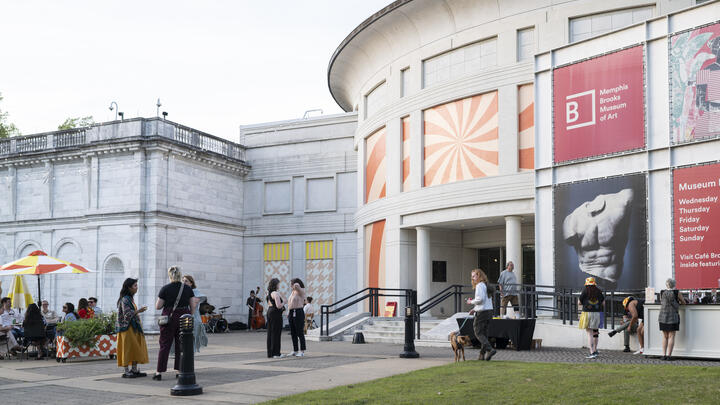

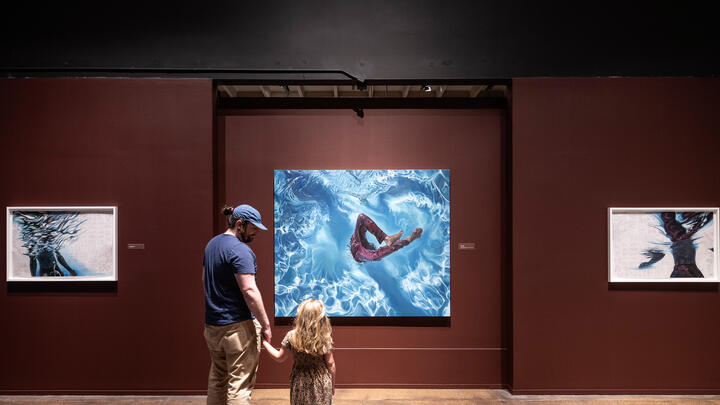

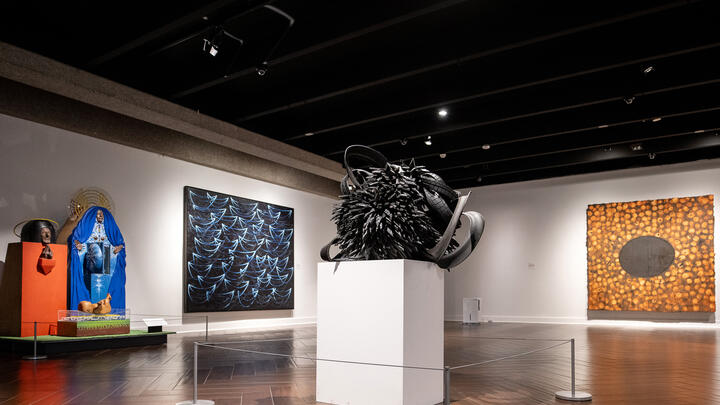
In the museum’s time left at the existing Overton Park location, Kahr and Jeff Rhodin, MAM’s chief revenue officer, are piloting events that foreground an inclusive, open approach. Kahr says, “There’s a huge opportunity to demonstrate how, through innovative programming, by being creative and entrepreneurial, and through taking risks, we can be much more inclusive of parts of our community that historically have felt excluded.”
An example is the $5 million Blackmon-Perry Fund established by a group of anonymous donors to support programs, exhibitions, acquisitions, and a curatorial fellowship focused on Black art from the U.S. and the world. Kahr sees it as a chance to have a national impact. “If we can do it well and prove that it works, it’s an incredibly powerful case study for other museums.”
MAM is also developing different models of engagement. “We found that our traditional membership model was failing. When the offer was free admission, people weren’t connecting with us,” Kahr explains. “But when we spoke to them about a topic that either connected to their identity or was super interesting to them, people who had not previously been involved were suddenly coming to every event.”
The museum created affinity groups around Black art, fashion, local artists, and LGBTQ. “Those groups are really sticky,” Kahr says. She is amazed at the impact. “It gives people a huge sense of purpose. It allows them to explore issues that resonate. And it creates connections among the group members. When you see relationships come out of the programs, it’s exciting. We’re building community.”
The board gave Kahr a clear directive: make sure all Memphians feel comfortable at the museum. The affinity groups and expansive programing align with that mission, but they also have a practical side.
“Memphis has a great community of creatives and art lovers, but it’s small because it’s a small city,” says Kahr. “We can’t survive just on our fellow art nerds showing up for everything. To engage a larger proportion of the population we have to blur the lines between art and other things.”
Much of the new MAM will be accessible without an admission charge. The aim is to make the museum—and its art—part of everyday life in the city. “If you’re just ducking in to get some very good coffee, you’re also going to see a bunch of great art,” Kahr explains. Those drawn to watching the sunset from the roof garden while enjoying music and wine will be in a sculpture garden. Whether people come for weekly mahjong, a lecture, a performance in the amphitheater, a friend’s birthday or graduation, a drawing class, or the open art-making space, Kahr underscores, “you’re also going to see a bunch of world-class art. Whether it’s a gallery or not, every place in the museum is an art space.”
Kahr accepts that the art will be secondary for many visitors. “That might be perceived as sacrilegious in certain institutions. If you have an enormous endowment, you can measure success on how great that New York Times review was,” she says. “If you’re a community art museum, your goal is to get people to come again and again and again and bring friends and see the museum as part of their core identity,” says Kahr. “To do that, you have to show them themselves, but also continuously expand their horizons about who they are.”

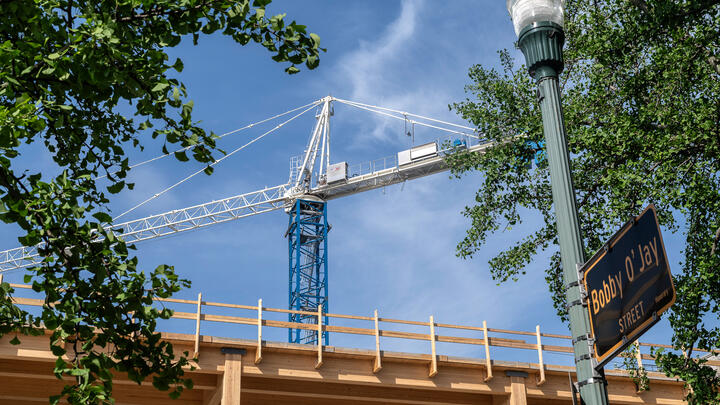
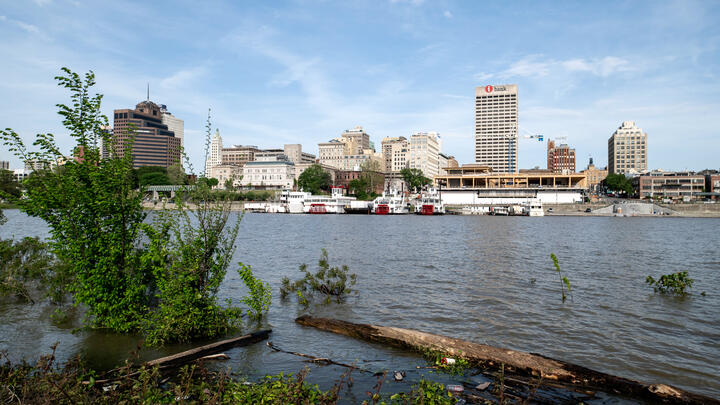
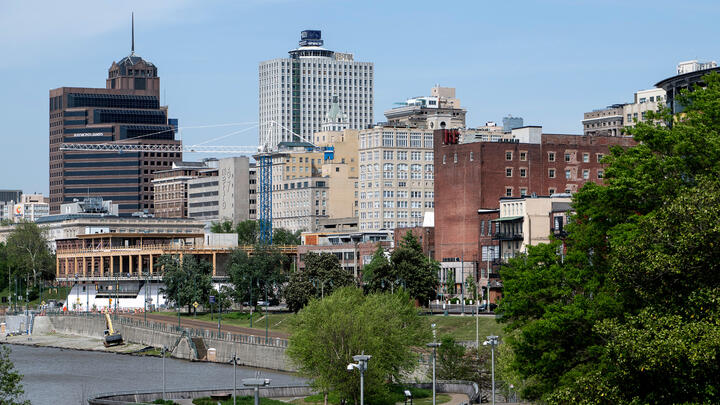
“What we’re trying to do in Memphis is prove that small cities can innovate and thrive, and that the museum can be a big part of that,” Hyde says. The new timber and glass building will expand horizons—and not just with its inspiring city and river views. “These kind of assets, they carry emotional power,” Hyde says. “It has become a symbol of ambition for the city, a symbol of hope coming out of COVID, and a symbol of how we can come together to do big things.”
Tom Lee Park, a glorious 31-acre riverfront greenspace that recently completed a $61 million renovation, is just a few blocks south. The sense of progress and possibility that the two projects provide is having an impact on Memphis as a whole, Hyde says. “We’ve seen a deepening of belief in a positive future and in the city’s conviction that we deserve to have world-class assets like Tom Lee Park and this art museum. As a result, we begin to think ‘OK, now we can make our schools better. Now we can address our public safety challenges. Now we can tackle some of the complex issues where there is no simple solution.’”
Downtown Memphis already has many remarkable amenities. Beale Street, famous for its blues venues, will be within walking distance of the new MAM. So will the historic Orpheum theater and the FedEx Forum, where the NBA’s Grizzlies play. Another neighbor will be the National Civil Rights Museum, located at the Lorraine Motel.
The MAM and the National Civil Rights Museum are jointly acquiring the archive of a historic Black-owned photography studio. “Because we will own the negatives, we can have prints in both museums,” Kahr says. “We can even make prints that get put up all over the city. I love the idea of putting art out in the community.”
Through proximity and partnerships, MAM aims to create an inclusive cultural hub where people connect and form relationships.
“Relationships are currency in a city like Memphis,” says Fordjour. “Being able to develop and maintain relationships is a big part of how we build a social fabric in the city.”
The new building is a risk. A renovation of the old location would have been cheaper. But it is also a bet on the city’s social fabric. “Downtown has seen huge investment coming from massive public-private partnerships among people who are deeply committed to making Memphis thrive,” Kahr says. In joining that effort, the MAM hopes that art will be the final catalyst that allows downtown to become a self-sustaining source of civic energy and pride, an economic driver, and a cultural heart for Memphis.
Fordjour knows that art can help cities thrive. Though he remains connected to Memphis and credits the city for his success, he currently lives in New York. “Part of why I live in New York is because every Saturday when I go out to look at art with my wife, there are lines of people wrapped around the corner waiting to see paintings,” Fordjour says. “Every time I see those lines, I’m affirmed.”
He sees the potential for that to happen in Memphis. “In Memphis we line up for music and we line up for barbecue. But I think a building like the new Memphis Art Museum can start something. It can be a beacon for art lovers. And it might be part of what gets Memphis to line up to see visual art as well.”
